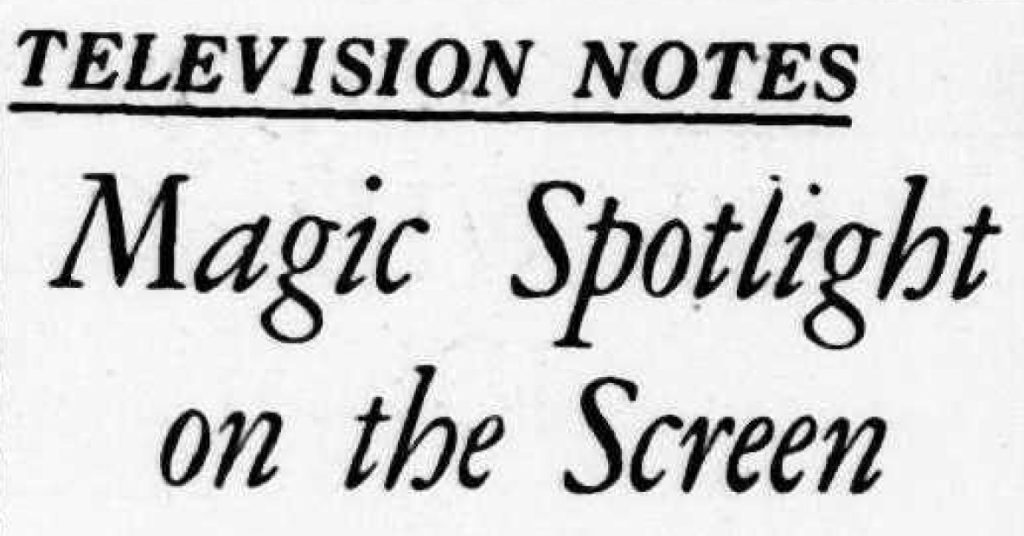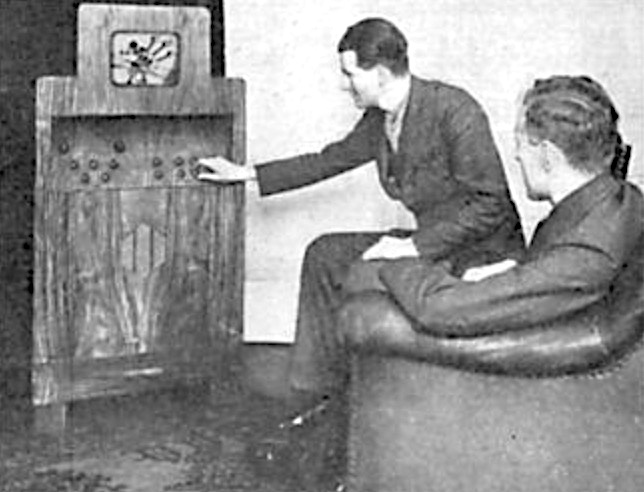OTD in early British television: 8 February 1935

John Wyver writes: The News on Friday 8 February 1935 carried the prediction by Captain A.G.D. West, who headed up the Baird company operations at Crystal Palace, that television would be ‘in practically every home within three years.’ The paper carried a detailed report of Captain West’s adddress to the Upper Norwood Rotary Club, but it is in fact another clipping that I want to highlight for today.
Under the headline ‘Magic spotlight on the screen’, the Daily Telegraph ‘Television Correspondent’ contributed a fascinating column about watching on the same day the BBC’s 30-line service on a mirror-drum receiver and an experimental Baird 180-line transmission from the Crystal Palace on a new cathode-ray receiver.
Our journalist watched the 30-line transmission in the Telegraph offices, and although the actual set is not detailed it is likely to have been something like the 1935 model pictured in this illustration from the cover of the January 1935 issue of Television. And yes, that slit on the right is the screen, for displaying portrait images, although it looks to be rather narrower than other pictures suggest.

The account gives some sense of the complexity of watching television in the mid1930s:
On the mirror-drum receiver there was the motor speed to regulate and the ‘framing handle’ to manipulate. Furthermore, I needed two sets, one to receive the sound, the other the vision… Tuning the mirro-drum receiver was an elusive art.
By contrast,
The cathode ray receiver gave me both sound and vision. It had five controls, two for sound tuning and volume, and the others for vision tuning, contrast and brilliance… I was agreeably surprised at the ease of handling the cathode ray model.
Again, there are no details of the set on which the journalist, seated in the Baird company offices in Victoria Street, saw a private experimental transmission from Crystal Palace. But it is likely to have been something similar to this 1935 model.

The column continued with praise for the BBC producer who had been running the 30-line service since the summer of 1932, Eustace Robb.
Consider that the present television transmitter can, in the studio, at most embrace a field about five or six feet wide and 11 feet high. A maximum number of four dancers can be shown as tiny figures shoulder to shoulder.
Mr Robb, by gradual stages has worked up to the presentation of a ballet and a complete musical comedy. A special caption machine creates atmosphere by all the tricks of the film title trade. Mr Robb is the first man to have written ‘B.B.C.’ on the air.
The journalist also noted that Robb’s ‘experience should prove invaluable to the new department’. But it was not to be be. Shortly after this account was published, the coproation announced that Gerald Cock, then in charge of radio outside broadcasts, was to head up the high definition service that would replace the 30-line transmissions.
Robb was bitterly angry at being passed over, and he effectively refused to work for Cock, an attitude that led to his leaving the BBC early the following year. He had a complex and colourful life afterwards, but that is a tale that will have to wait for a future post.
Leave a Reply